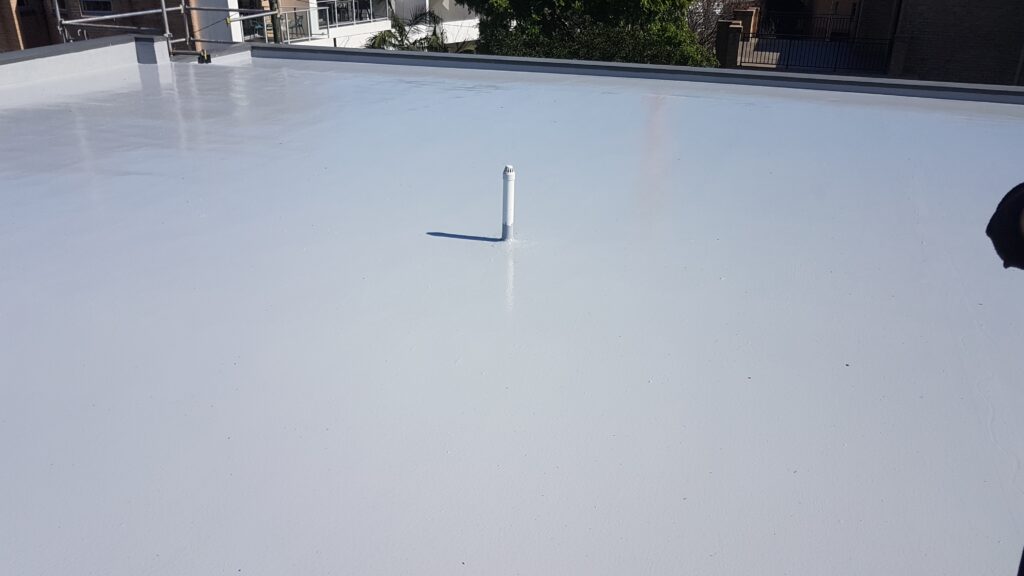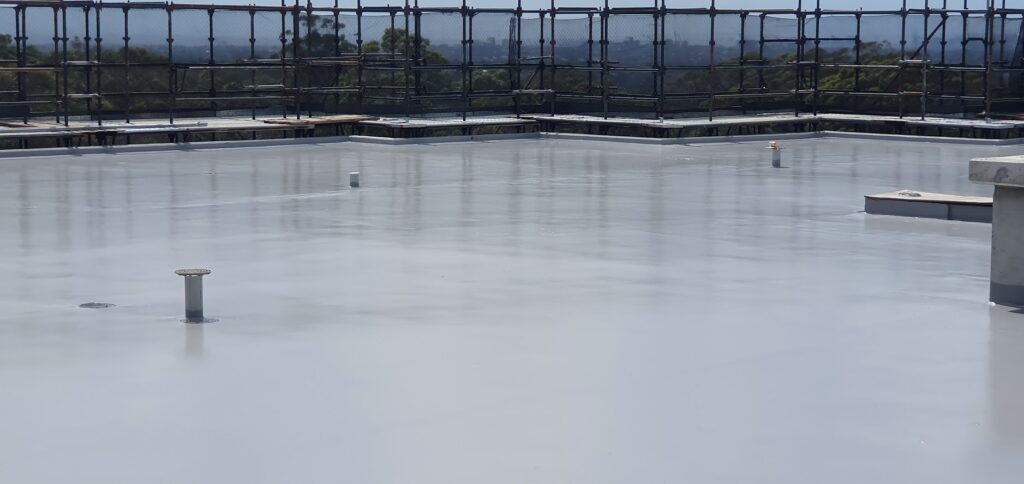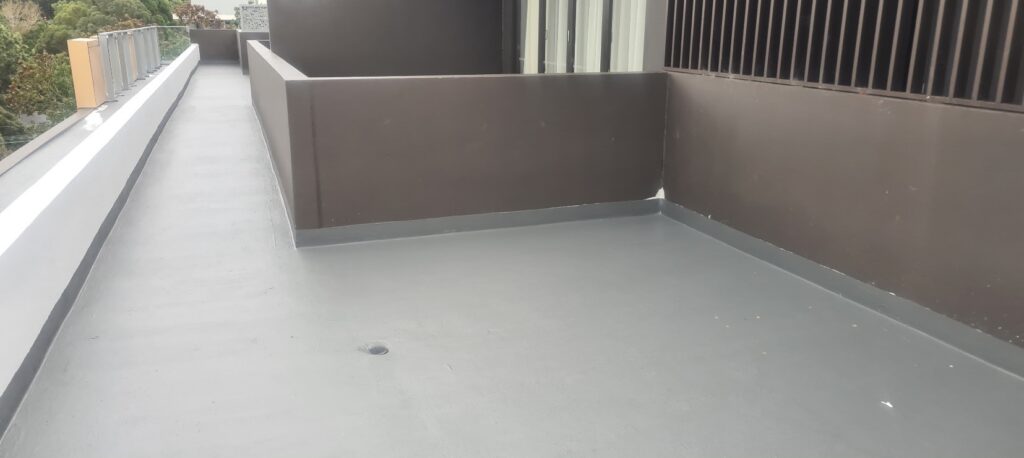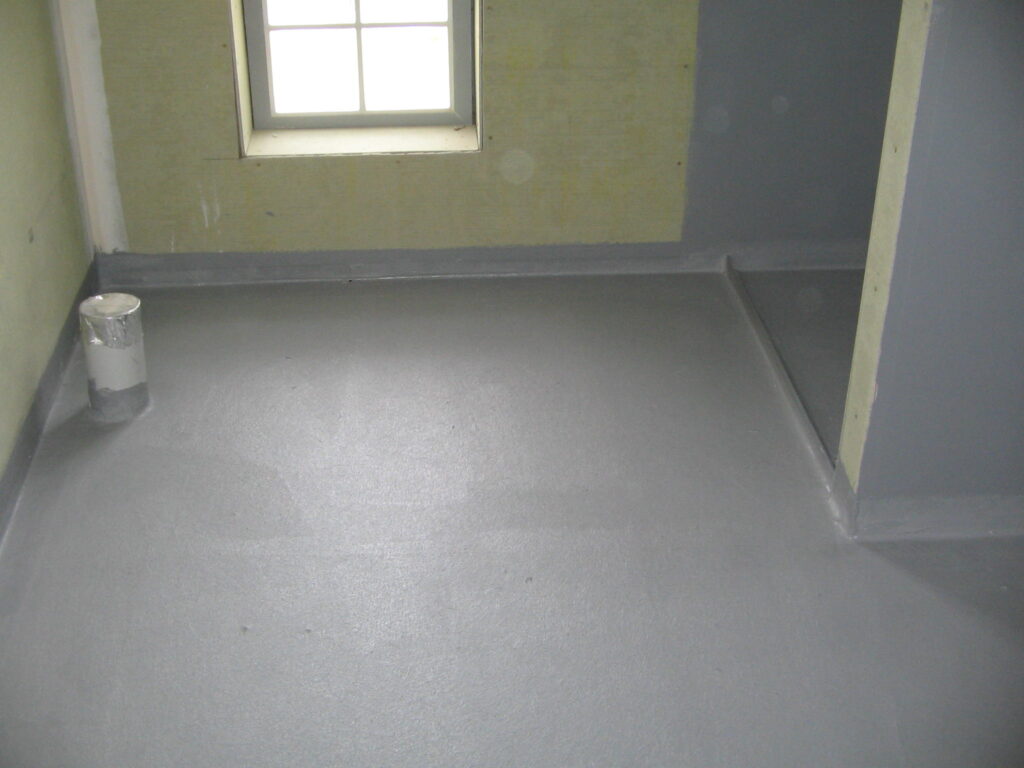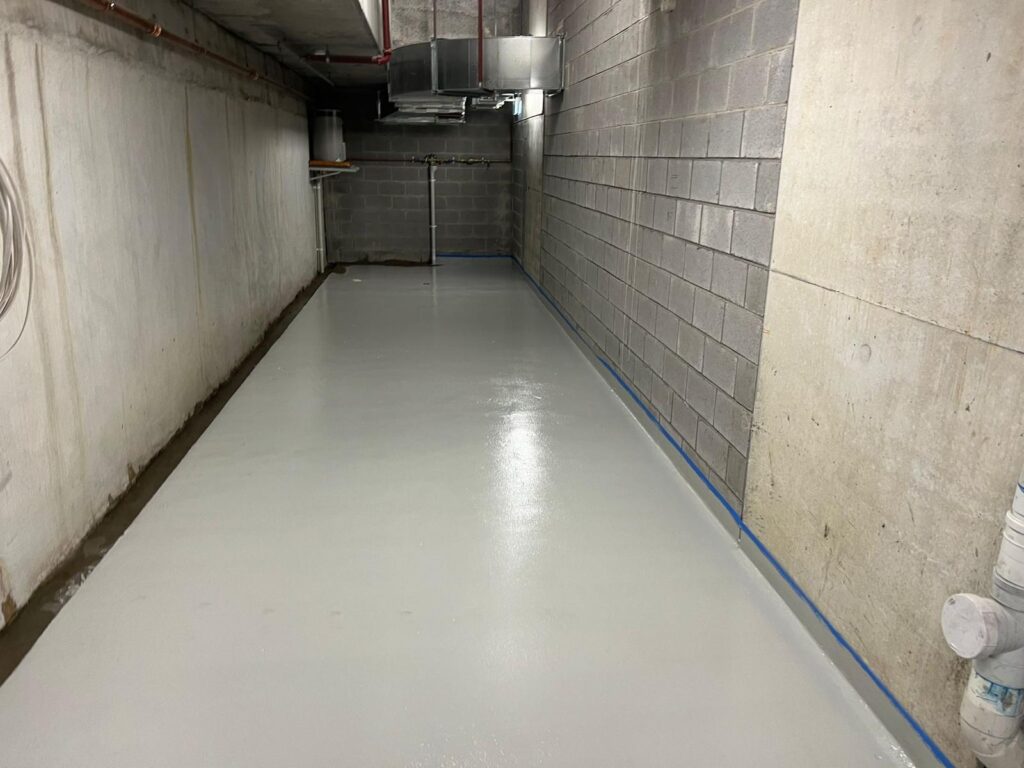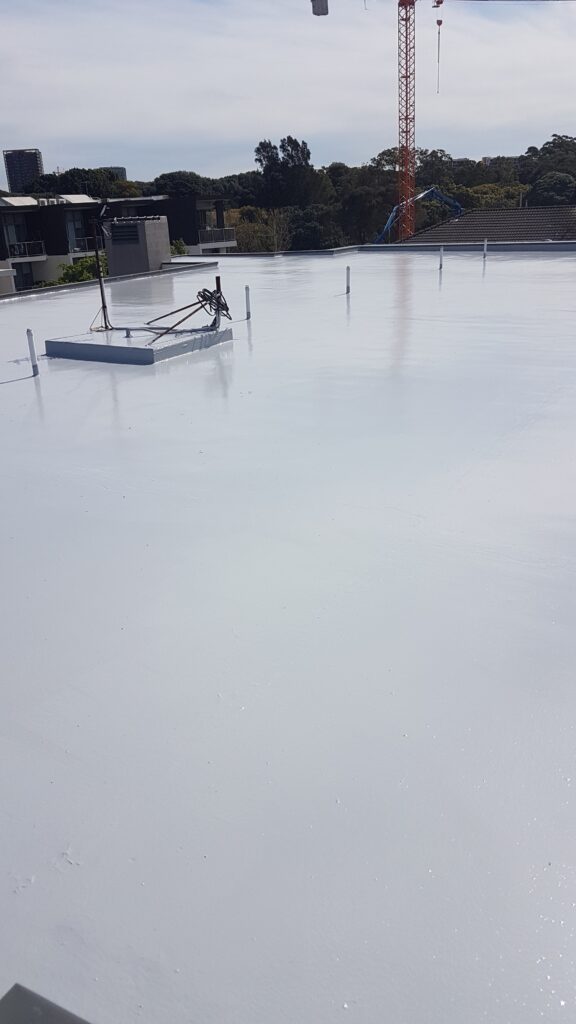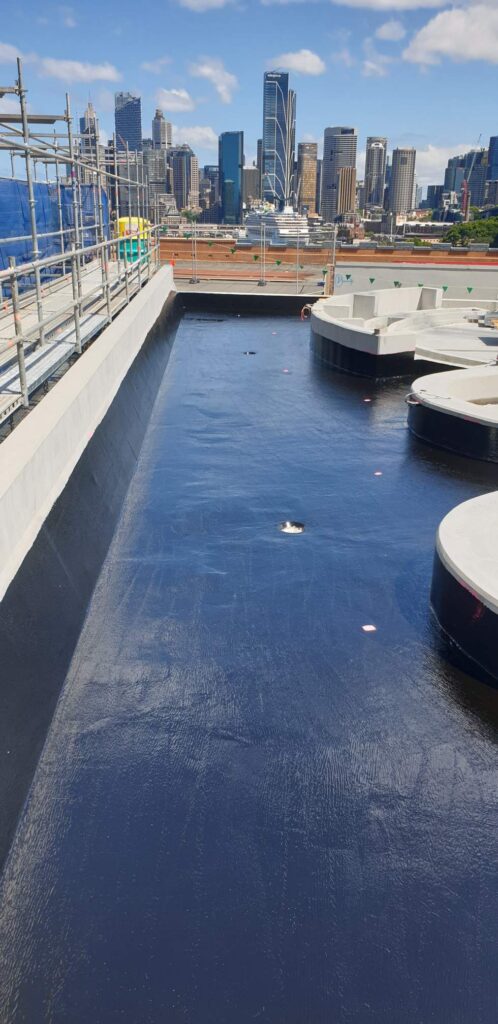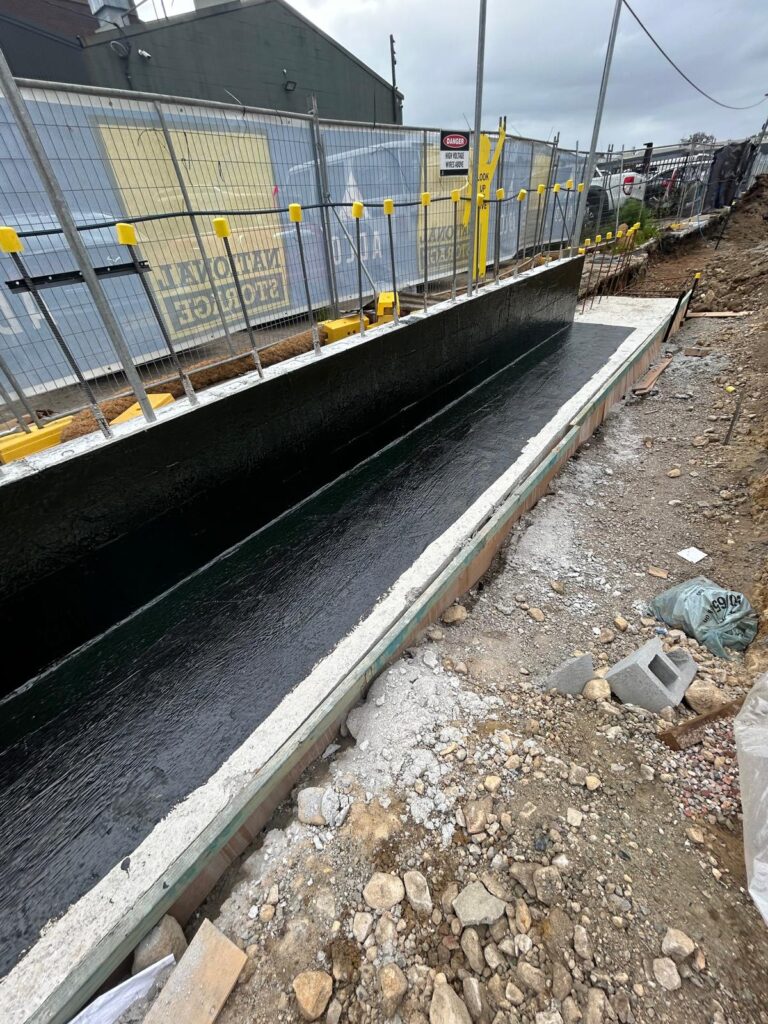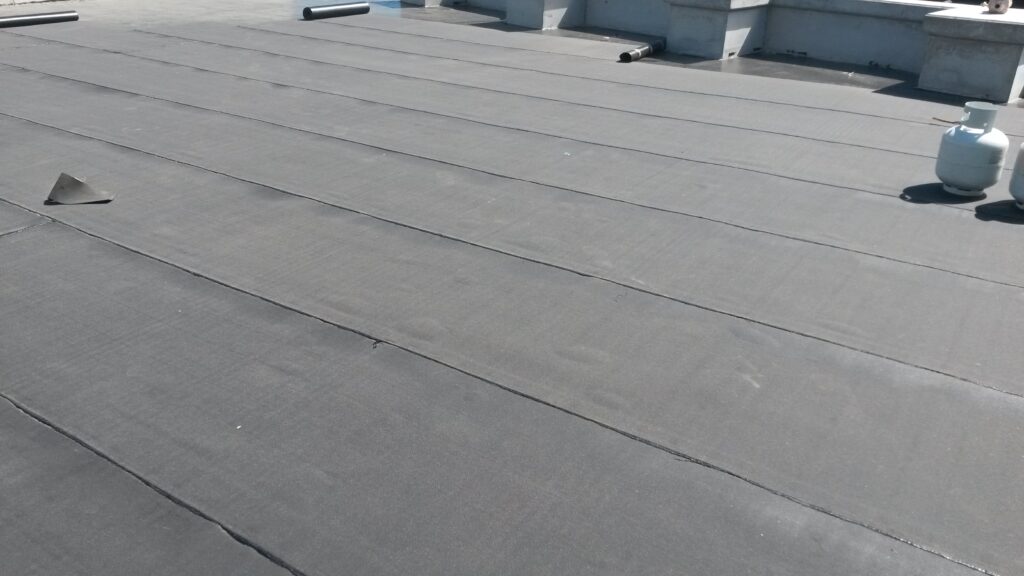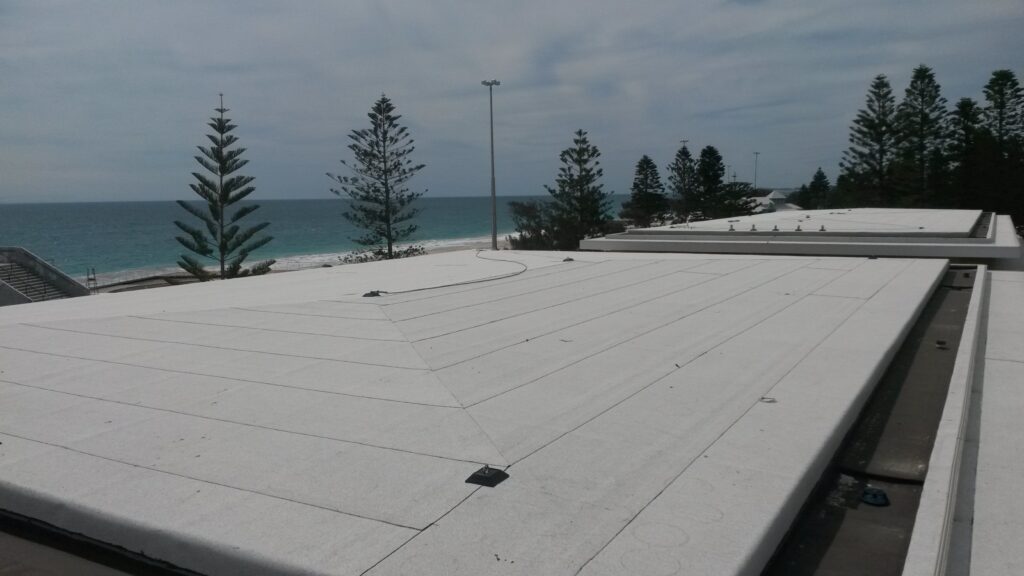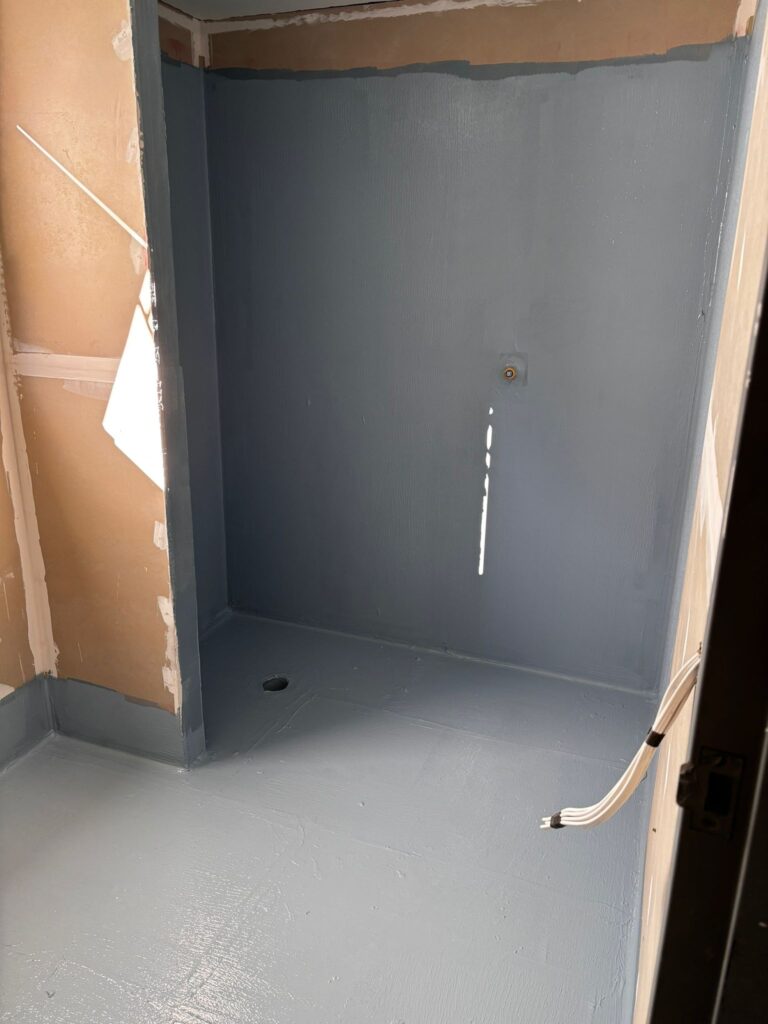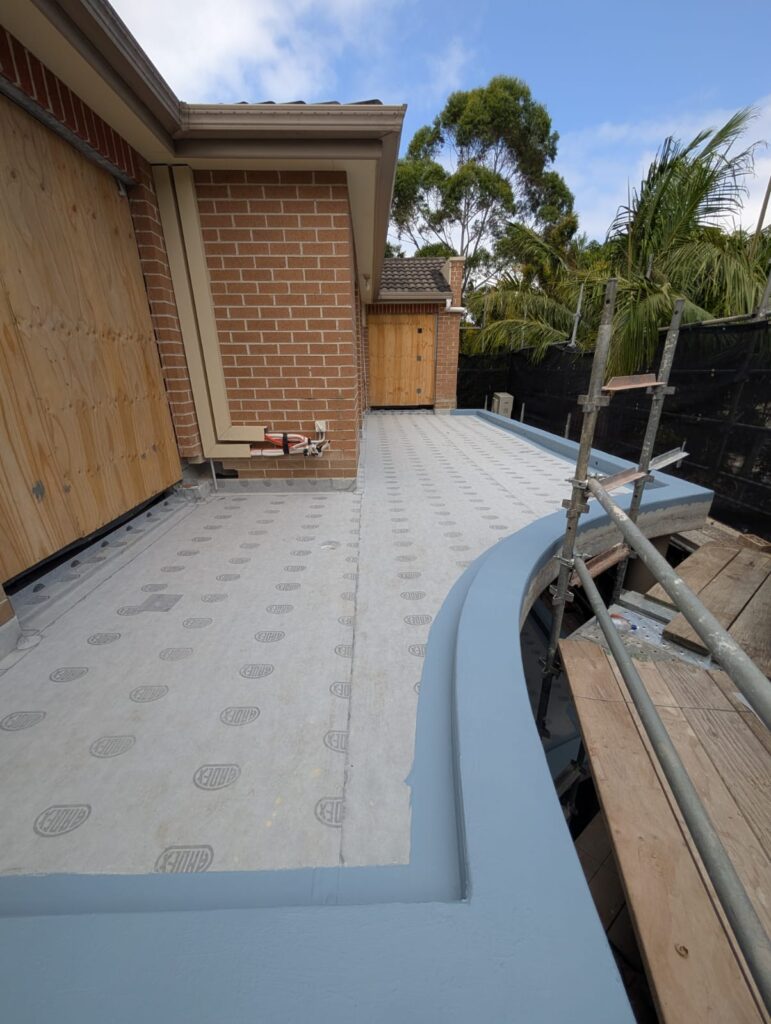What We Can Do
Leak Detection
We can confirm conclusively if a horizontal or vertical membrane is watertight to ensure peace of mind and a long service life.
How Does An IntegriScan Work?
The principle of this Electronic Leak Detection (ELD) method is to establish a voltage potential between the membrane and the roof deck and then track any leakage current. This is accomplished by wetting the surface of the membrane, applying a voltage with respect to ground and then locating areas where electrical current flows through membrane breaches to the deck. A scanning platform is used to test the membrane for breaches. The platform is constructed with dual metal sweeps which make continuous electrical contact with the membrane surface. The outer sweep forms a continuous perimeter around the platform with the inner sweep contained within the perimeter of the outer sweep.
Benefits of Detec Systems:
- Confirms conclusively if a horizontal or vertical membrane is water tight
- Locates breaches during installation so repairs can be made immediately
- Used to test non-conductive membranes in difficult to reach areas, transitions, corners, parapet/wall seams, penetration seals, and vertical surfaces.
- Locates breaches caused by follow on trade damage prior to the placing of overburden
- Provides a safe, precise, cost effective, and conclusive substitute for flood testing
- Pinpoints hard to find leaks in older membranes
- Complies with ASTM Practice D8231 and ASTM Guide D787
Locating A Breach
Accurate Process for Locating Waterproofing Membrane Breaches
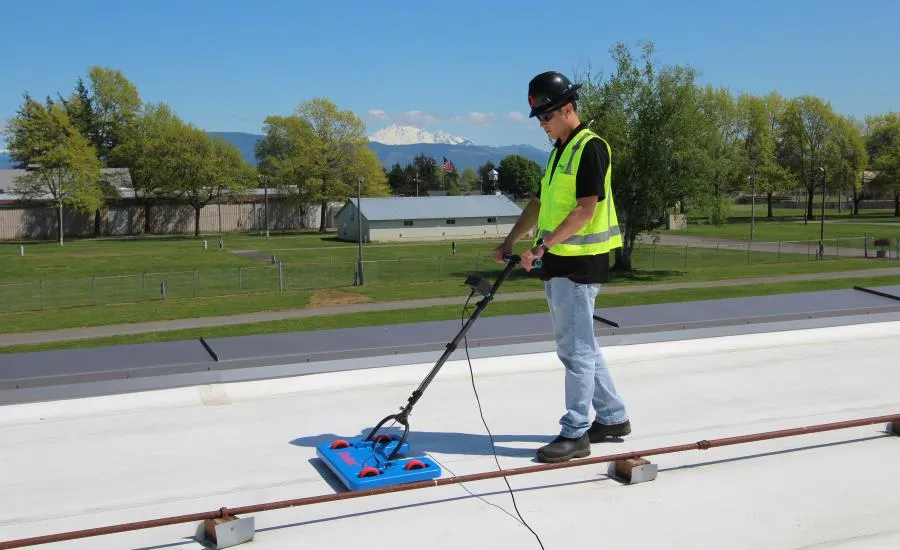
Roll the platform across the wet testing area.
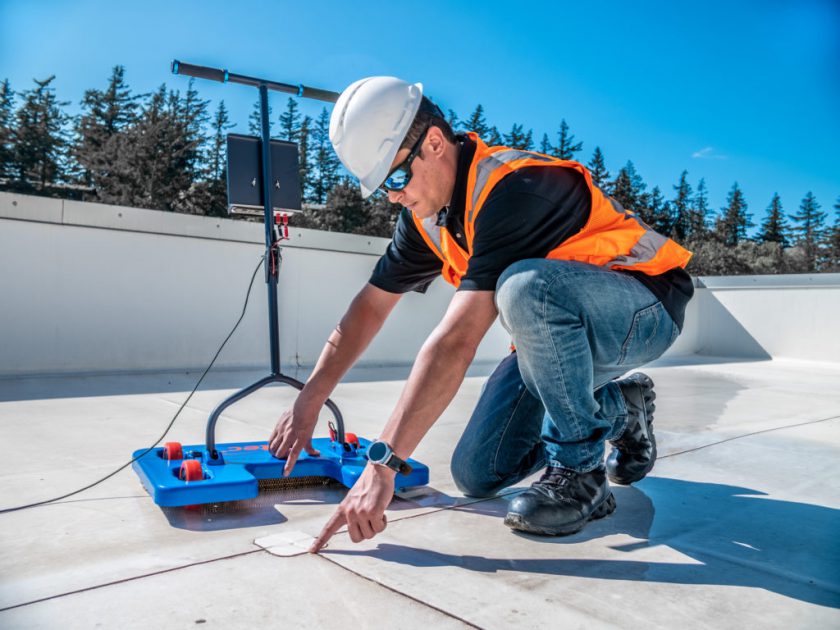
When the platform is positioned over a breach, the inner gain meter will light up, indicating a ground current.
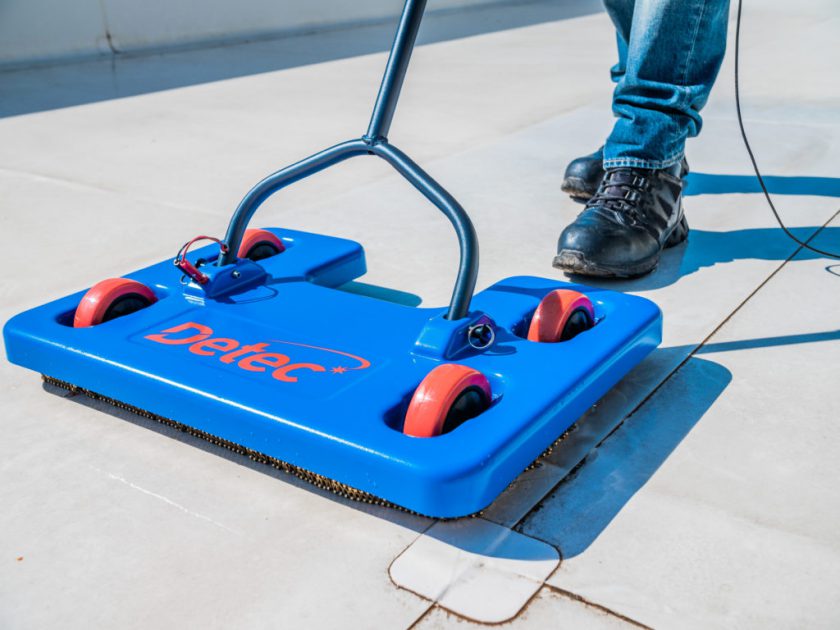
An audible response will increase in pace and pitch to a solid alarm.
Type of Breach
DIfferent Types of Mebranes We Can Test
